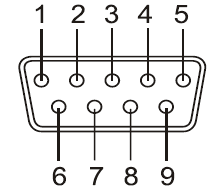Standards:
USB 2.0 Hubs
USB 3.0 (3.2 Gen 1) Hubs
USB 3.2 Gen 2 Hubs
USB Type-C Hubs
Synchronize your PDA, Digital Camera, Cell Phone or other device currently using a serial port with this USB C to RS-232 Serial Adapter. Connect your serial devices to the newer computer equipment needing a serial connection that supports USB.
Our USB C to Serial Adapter fully supports Windows 10, Windows 8, Windows 7. It utilizes the Newest FTDI Chip Technology allowing to be upwards compatible with Newer Operating Systems. Using your new laptop for USB C to Serial applications is completely seamless. You can plug our new USB C to serial adapter in and install it with no problems. The Drivers are fully certified by Microsoft.
Looking for a USB C to Serial adapter for your new Laptop? This is a great price and amazing support for USB Type-C technology. This adapter has been fully tested with Windows 10 and works flawlessly. Do not hesitate to purchase it and use it in your new setup. We back this support claim up with a 30 day guarantee!
RS-232 Signal Pin-outs of DB-9 Male
| Compliance |
| ||||||||||
|---|---|---|---|---|---|---|---|---|---|---|---|
| Physical Characteristics |
| ||||||||||
| Serial Attributes |
| ||||||||||
| Software |
| ||||||||||
| Hardware |
| ||||||||||
| Other Data |
|
| USB Bus | |
| Compliance | USB 1.0/1.1 compliant, USB 2.0 compatible |
| Speed | 12 Mbps, full-speed USB |
| FIFO | 128 byte transmit FIFO 384 receive FIFO |
| Serial Interface | |
| Port Type | RS-232 |
| Number of Ports | 1 |
| Connectors | DB9 male |
| Serial Line Protection | |
| ESD Protection | 10KV |
| Serial Port Speed | |
| Baudrate | 300 bps to 921.6k bps |
| Serial Communication Parameters | |
| Data Bits | 5, 6, 7, 8 |
| Stop Bits | 1, 1.5, 2 |
| Parity | None, Even, Odd, Space, Mark |
| Flow Control | RTS/CTS, XON/XOFF |
| Serial Signals | |
| RS-232 | TxD, RxD, RTS, CTS, DTR, DSR, DCD, GND, RI |
| Driver Support | |
| OS | Windows XP, 7, 8, & Windows 10 (WHQL certified) Linux Kernel 2.4 and up built-in support |
| Power Supply | |
| Input | Bus-powered No external power adapter required |
| Mechanical | |
| Chassis | Plastic, ABS |
| Environmental | |
| Operating Temperature | 0 to 55 °C (32 to 131 °F) |
| Operating Humidity | 5 to 95% RH |
| Storage Temperature | -20 to 75 °C (-4 to 167 °F) |
| RS-232 DB9 Male | |||||||||||||||||||||||||||||||||||||||||
|
RS-232 DB9 Male Connector Pin-outs |
RS-232 Signal Pin-outs of DB-9 Male |
||||||||||||||||||||||||||||||||||||||||
 |
|
||||||||||||||||||||||||||||||||||||||||
View frequently asked product questions below. For all serial troubleshooting, visit this page.
Still need help? Reach out!
Test your components by:
When testing cables:
When testing serial ports and devices:
Note: You are required to restart your computer after disabling the Driver Signature Enforcement. Save all open work on your computer.
Disable driver signature enforcement:
When your system restarts:
When your computer restarts, Driver Signature Enforcement will be disabled and you can install the drivers.
Note: You are required to restart your computer after disabling the Driver Signature Enforcement. Save all open work on your computer.
Disable Driver Signature Enforcement:
After your computer restarts:
When your computer restarts, Driver Signature Enforcement will be disabled and you can install the drivers.
Once the driver/software is installed, follow these steps to allow the software:
Reviews
There are no reviews yet.